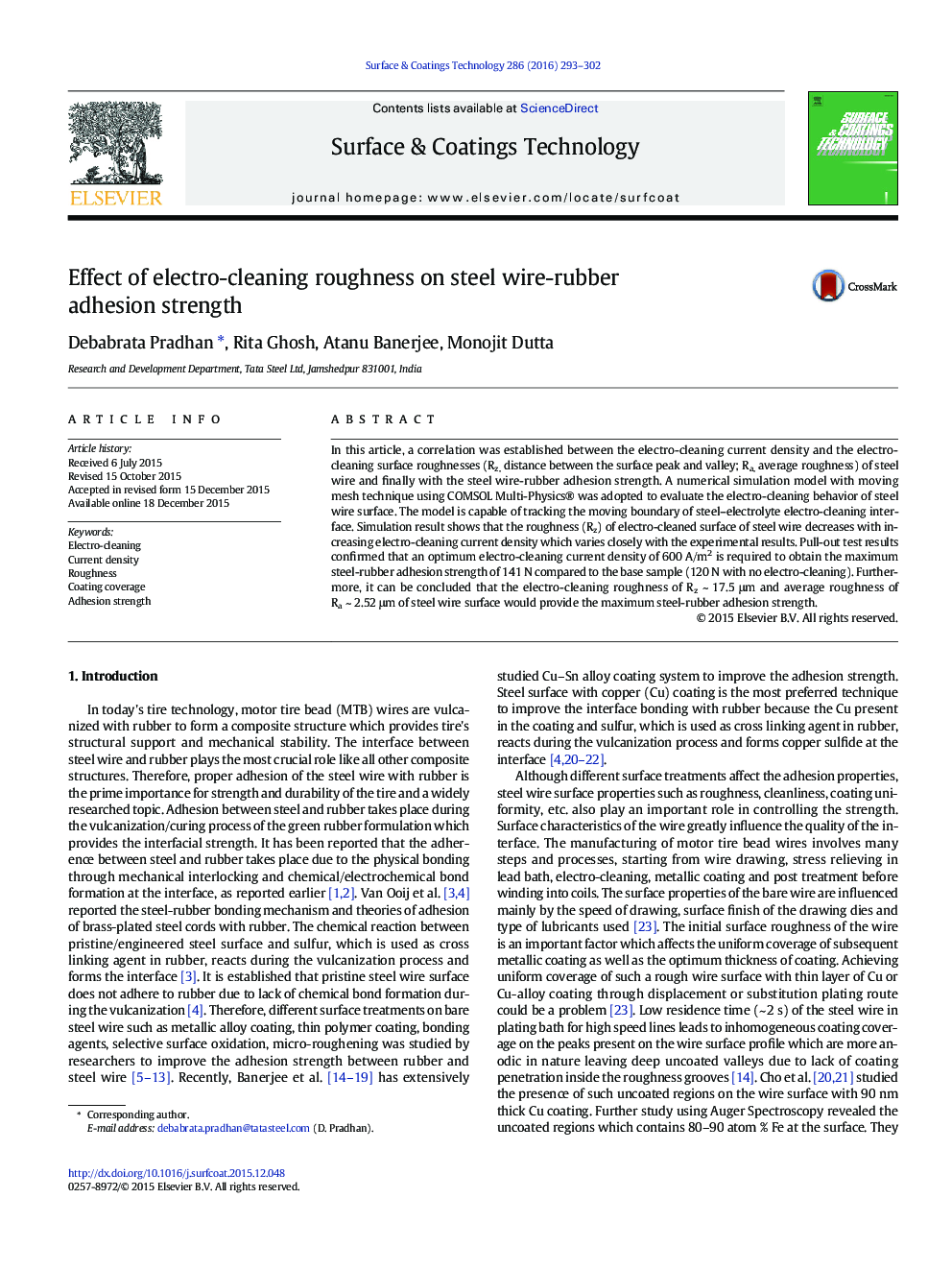| کد مقاله | کد نشریه | سال انتشار | مقاله انگلیسی | نسخه تمام متن |
|---|---|---|---|---|
| 1656790 | 1517593 | 2016 | 10 صفحه PDF | دانلود رایگان |
• Numerical simulation model was adopted to investigate electro-cleaning of steel wire.
• Roughness (Rz) of steel wire decreases with increasing current density.
• Simulated roughness (Rz) of steel wire varies closely with experimental result.
• 600 A/m2 current density provides the maximum steel-rubber adhesion strength.
• Rz ~ 17.5 μm and Ra ~ 2.52 μm provide maximum adhesion strength of 141 N.
In this article, a correlation was established between the electro-cleaning current density and the electro-cleaning surface roughnesses (Rz, distance between the surface peak and valley; Ra, average roughness) of steel wire and finally with the steel wire-rubber adhesion strength. A numerical simulation model with moving mesh technique using COMSOL Multi-Physics® was adopted to evaluate the electro-cleaning behavior of steel wire surface. The model is capable of tracking the moving boundary of steel–electrolyte electro-cleaning interface. Simulation result shows that the roughness (Rz) of electro-cleaned surface of steel wire decreases with increasing electro-cleaning current density which varies closely with the experimental results. Pull-out test results confirmed that an optimum electro-cleaning current density of 600 A/m2 is required to obtain the maximum steel-rubber adhesion strength of 141 N compared to the base sample (120 N with no electro-cleaning). Furthermore, it can be concluded that the electro-cleaning roughness of Rz ~ 17.5 μm and average roughness of Ra ~ 2.52 μm of steel wire surface would provide the maximum steel-rubber adhesion strength.
Journal: Surface and Coatings Technology - Volume 286, 25 January 2016, Pages 293–302
